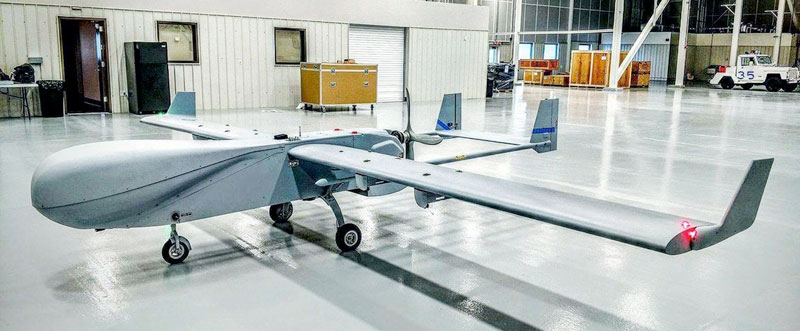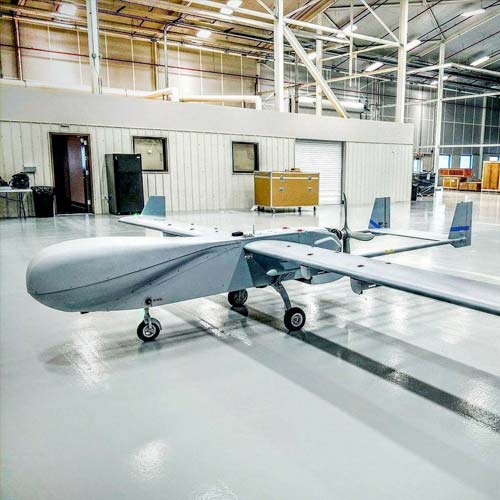
NASC in the News
NASC in the News
This Drone Once Fought Wars. Now It’s Fighting Climate Change
This March, a truck pulled onto a runway in Oregon, towing a miniature plane for a test flight. At 650 pounds, the plane was too large to be a toy, but too small to fit a pilot.
That’s because the ArcticShark isn’t a toy, and it doesn’t need a pilot. It’s a drone. Department of Energy scientists at the Pacific Northwest National Laboratory commissioned its design in order to fly over the Alaska North Slope to take data in the Arctic atmosphere. As it flies through the air at a modest 75 miles per hour, the drone will measure the size of atmospheric particles, levels of infrared radiation, humidity, wind direction, and more—measurements that will help scientists understand basic atmospheric processes like how clouds form, which they could eventually apply to climate models. “We still don’t have a good understanding of how these processes really take place,” says atmospheric scientist Beat Schmid, who leads the project at the Pacific Northwest National Laboratory.

But the ArcticShark’s story didn’t begin with these atmospheric scientists in Oregon. It began with America’s wars in the Middle East.
The drone is the handiwork of Navmar Applied Sciences Corporation, a defense contractor founded in 1977 that originally focused on anti-submarine technology. About fifteen years ago, Navmar started making drones because the Department of Defense wanted them. The US military began using drones as early as 2000, first for surveillance—and later for targeted strikes. The DOD began calling for companies to develop more drones: faster ones, slower ones, ones that could carry heavier loads. Navmar answered one of their calls for a drone that could carry specific camera equipment. They built their first model in 2003, known as the Mako. “It kind of just grew from there,” says TJ Fenerty, Navmar’s Director of Business Development.
Two years later, they upgraded the Mako into a model known as the TigerShark. The US military used TigerSharks in Iraq and Afghanistan to locate roadside bombs known as improvised explosive devices—the number one cause of civilian deaths in Afghanistan in 2013. Because Navmar built the aircraft and not any of the equipment on it, they won’t comment on how the TigerShark found the bombs. In defense-speak: “The payload that we flew neutralized that threat,” says Ken Lewko, Navmar’s Director of Financial Operations.
But the military’s appetite for new drones hasn’t kept up. After Obama began pulling troops out of Afghanistan in 2011, Navmar’s military contracts started to dwindle. “Defense contracts ebb and flow with what’s happening in the world,” Lewko says.
So Navmar decided to expand its clients beyond the military. The company set its sights on atmospheric scientists, who have been using drones for some 20 years to take measurements essential to building accurate climate models and forecasts. They still work on defense contracts, but in the last year and a half, Fenerty has steered Navmar toward more diverse clientele, such as collaborating with the Georgia Tech Research Institute. “I’m trying to keep us balanced,” Fenerty says.
A little over a year ago, they bid on a contract from Pacific Northwest National Laboratory to build a drone capable of carrying 70 pounds of scientific instruments and enough electrical power to operate them. “The electrical power [capacity] really set the TigerShark apart,” Schmid says. That, and an affordable price point of $800,000 for the drone, won Navmar the contract.
Navmar isn’t the only defense contractor that makes drones for scientists. One popular drone for taking atmospheric measurements is the Boeing-owned Insitu ScanEagle. The military used the ScanEagle in the aughts to surveil the battlefield in the Iraq War. A National Oceanic and Atmospheric Association lab used the Manta, a small military-born drone, to measure atmospheric soot in Norway in 2015.
“We complain about the amount of money spent on the Department of Defense, and we think it’s spent on bullets and bombs,” says Fenerty. “But a lot of that money is spent on technology that has dual use.” For example: GPS, the first internet protocols, walkie-talkies, super glue.
But it’s happenstance that the military tech ends up useful for science. “Science is really an afterthought,” says Chris Meinig, the director of engineering at the NOAA’s Pacific Marine Environmental Laboratory, who worked on the scientific drone deployed in Norway. Think back to the ’60s, when the US launched the first satellite forerunners of GPS to track their nuclear submarines. It took geoscientists two decades to realize they could use them to detect earthquakes.
Still, Navmar’s main concern is staying in business. Because of the ups and downs of defense contracts, Fenerty wants the company to net more scientist clients and branch out further into commercial markets. “We’d like to get into agriculture and emergency management. There’s many, many areas that could benefit from [drones],” he says. “It can’t always be about war.” Like computer hacking, fire, and words, it seems that drones—in spite of their violent reputation—have capacity for good after all.


